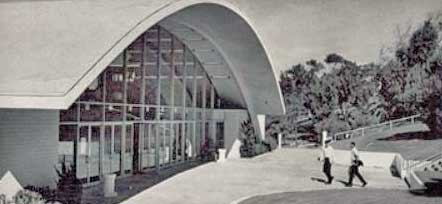

| |
| players and rosters |
| coaches and trainers |
| news articles |
| action photos |
| team photos |
| cheerleaders |
| reunion 2010 |
| Thousand Oaks Gathering 2019 |
| memorabilia |
| statistics |
| Class Photos | Game Programs |
| contact |

| Welcome |
This site is for all of us to remember our time at Cal Western and USIU. This is your site so send me ideas and material and I will add them to the pages. I need photos, rosters, etc. USIU is the descendant of the original Balboa School of Law founded by Leland Ghent Stanford as a private graduate institution in 1924. The name was changed to Balboa University, and then to California Western University in 1952. CWU is founded at site of Tingley's Theosophical Society on Point Loma. Once again, in 1968, the school's name was changed to United States International University. The law school, however, retained the name of California Western School of Law. Click here to read more about the history of the campus site. United States International University, previously known as California Western University, integrated the qualities of the small liberal arts college with the strength and richness of a major academic program. It had seven campuses, four on the mainland and three abroad, with one other campus being developed outside the United States. The multi-campus, international concept shaped the development of the University since its earliest days, with the dual objective of offering the intimacy and personalized education of a small campus and preparing students for responsible citizenship in an ever-shrinking world. The University President was Dr. William C. Rust, who had been with the school since its inception in 1952 and had seen it grow from two on-campus buildings and a handful of students into its sale to Alliant University. The Cal Western Campus was sold to what is now Point Loma Nazarene College. Alliant University has an alumni site that includes some students from Cal Western. This site is the most complete information on Cal Western Football Teams and USIU football teams. The basic goal of Cal Western and/or United States International University was to develop human excellence—not simply intellectual excellence. From the beginning, the University emphasized those areas where people work with people, where ideals and high purposes could raise the level of living, and where man’s search for meaning was central. The undergraduate program was in the traditional liberal arts concept, presenting carefully selected courses considered to be essential to each of the academic disciplines. Graduate study was deliberately limited to the humanistic areas—those areas of the liberal arts and social sciences, business, education and law, which dealt with the affairs of men, the minds of men, and the relationship which they have to one another. It had seven campuses by 1970, four in this country and three abroad. The California Western Campus occupied 140 acres of wooded land overlooking the Pacific Ocean, on Point Loma in San Diego. It had the advantage of a quiet, natural setting of seclusion and beauty, yet was but a 15-minute drive from the center of the city. Like the other two San Diego campuses, it has Los Angeles to the north, Mexico to the south, the mountains and desert to the east and the ocean to the west, and affords the many educational, cultural and recreational opportunities to be found only in a cosmopolitan area. On it were located the California Western College of Arts and Sciences and the School of Law. The Center for the Performing Arts, in downtown San Diego, houses the School of Performing Arts, which offers sound general education along with intensive professional training in theatre, dance and music. It also housed the Central Administration offices. The Elliott Campus, which opened in the fall of 1968 on 410 acres of rolled wooded land just within the northern boundary of the city, was the location of the Elliott College of Arts and Sciences, the Graduate School of Leadership and Human Behavior, the Graduate School of Business Administration and the Graduate School of Arts and Sciences. It was 20 minutes to the center of the city and 15 minutes to the beaches and cultural attractions of La Jolla. The Colorado Alpine Campus, in Steamboat Springs, Colorado, offerd regular lower division liberal courses and was also the site of the University’s Intensive Study Program. Its rugged, mountainous setting was in the heart of one of the most popular winter and summer recreational areas in the United States. U. S. International University in England, the first of USIU’s “university centers abroad,” provided a rich and diverse academic program for American students and a program for students from England and the Continent which prepares them for upper division study on the campuses of the University in the United States. Easily accessible to London, Stratford and Oxford, this campus took full advantage of the historic sites, famous museums, drama festivals and other cultural institutions that were close at hand. Universidad Internacional de Mexico was a branch of USIU in Mexico City which opened in full operation by the fall of 1971. It offered general education and introductory business courses for students entering in Mexico, and a program of Latin American studies for students from USIU campuses in other countries. U. S. International University in Kenya had a secondary school, Nairobi International School, preparing students from Africa for admission to the University. A university-level program in Kenya was opened in 1971. USIU Maui USIU was a private and independent California nonprofit corporation.
|
Point Loma Campus in 1970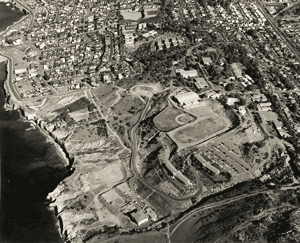
Lecture Hall and Science Building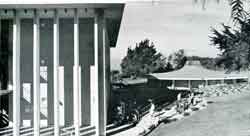
Library
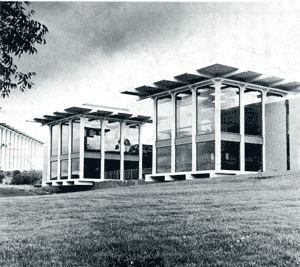
Balboa Statdium 1966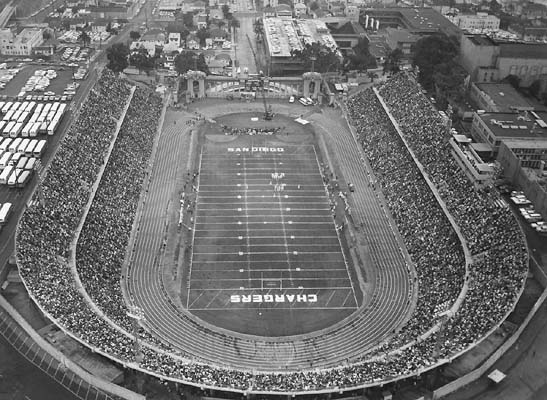
Administration Building 2010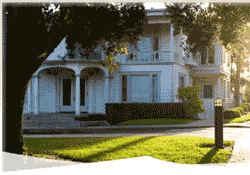
Gym 2010

Inside the Gym 1966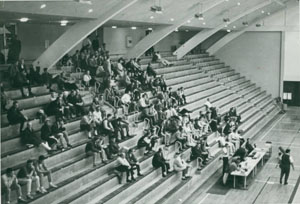
SEE MORE PHOTOS OF CAMPUS
History of Campus by PLNU
History of Alliant University
History of USIU on Wikipedia
Cal Western - Lost College
Policies and Regulations for USIU circa 1970
Student Fees 1969
Description of USIU from 1970 football program
